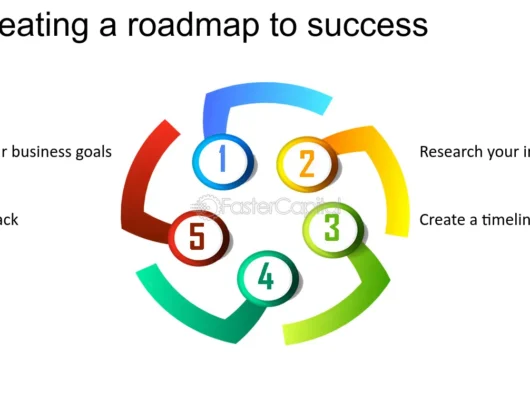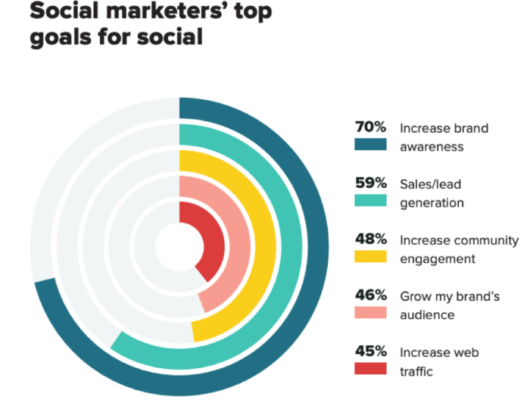Social media has transformed into one of the most powerful marketing tools available today. Whether you’re looking to increase brand awareness, boost sales, or engage with customers, the right social media strategy can lead to significant success.
However, achieving meaningful results requires a well-planned approach. In this article, we’ll outline the essential steps to social media success and how you can implement them to grow your brand effectively.
Step 1: Define Your Social Media Goals
The foundation of any successful social media strategy is having clear, measurable goals. Knowing what you want to achieve guides all your future decisions and helps you evaluate your progress.
Common social media goals include:
- Increasing brand awareness: Reaching a wider audience and increasing your visibility.
- Driving website traffic: Using social media to attract visitors to your website.
- Generating leads: Collecting customer information through campaigns, sign-ups, or social interactions.
- Boosting engagement: Encouraging more likes, shares, comments, and conversations with your audience.
- Driving sales: Using social media to directly or indirectly increase conversions.
Key Tip: Use the SMART framework to define goals—Specific, Measurable, Achievable, Relevant, and Time-bound.
Step 2: Know Your Audience
To succeed on social media, it’s crucial to understand your target audience. Knowing their demographics, preferences, behaviors, and challenges allows you to create content that resonates with them. Your audience’s habits will also inform which platforms to prioritize.
For example:
- Younger audiences may spend more time on TikTok or Instagram.
- Professionals and B2B audiences are more likely to engage on LinkedIn.
- Facebook and Twitter can offer a mix of diverse audience segments.
Key Tip: Conduct audience research using social media analytics, surveys, and competitor insights to ensure you’re speaking to the right people on the right platforms.
Step 3: Choose the Right Platforms
Not all social media platforms are created equal, and not every platform will be relevant for your brand. Instead of spreading your resources thin across every social channel, focus on the ones where your target audience is most active and where your brand can thrive.
Here’s a breakdown of the most popular platforms:
- Facebook: Broad demographic appeal, great for community building.
- Instagram: Visual storytelling, perfect for product-based businesses.
- Twitter: Ideal for real-time communication and customer service.
- LinkedIn: Best for B2B marketing, professional networking, and thought leadership.
- TikTok: Short-form video content, ideal for younger audiences and viral marketing.
Key Tip: Start by focusing on two or three key platforms and expand as your strategy matures.
Step 4: Develop a Content Strategy
Content is the heart of social media success. It’s what drives engagement, sparks conversations, and builds relationships with your audience. Your content strategy should align with your brand’s voice and your audience’s preferences.
Types of content to consider:
- Images and videos: Visual content tends to perform best across platforms like Instagram, Facebook, and TikTok.
- Educational posts: Share how-tos, tips, and resources to provide value to your audience.
- User-generated content (UGC): Showcase content created by your customers or followers, which helps build community trust.
- Behind-the-scenes: Share insights into your brand, employees, or production processes to humanize your company.
- Interactive content: Polls, quizzes, and Q&A sessions are great for boosting engagement.
Key Tip: Mix various content types to keep your feed dynamic and interesting. Balance promotional posts with value-driven content to build a strong relationship with your audience.
Step 5: Create a Posting Schedule
Consistency is key in social media marketing. Posting regularly keeps your brand top of mind and ensures your audience remains engaged. However, it’s also important to find the right posting frequency for each platform to avoid overwhelming your followers.
Most platforms provide insights into when your audience is most active, allowing you to schedule posts for optimal reach and engagement. For example:
- Instagram: Posting 3-5 times per week is a good balance for maintaining engagement.
- Twitter: Frequent posts are often necessary due to the fast-paced nature of the platform—up to 10 times a day might be ideal.
- LinkedIn: Posting 2-3 times a week can help you stay relevant without overloading your audience.
Key Tip: Use social media management tools like Buffer, Hootsuite, or Sprout Social to schedule posts and maintain consistency.
Step 6: Engage with Your Audience
Social media isn’t just about broadcasting content; it’s about building relationships. Engaging with your audience by responding to comments, answering messages, and participating in conversations is crucial for fostering trust and brand loyalty.
Examples of engagement strategies:
- Reply to comments: Whether positive or negative, responding to comments shows that you’re active and attentive.
- Host live Q&A sessions: Engage your audience directly by addressing their questions in real time.
- Share user-generated content: Feature content from your followers to build a sense of community.
Key Tip: Personalize your responses as much as possible to show genuine interest in your audience’s opinions.
Step 7: Utilize Paid Advertising
While organic reach is valuable, paid advertising can give your brand a competitive edge by expanding your reach to a targeted audience. Platforms like Facebook, Instagram, and LinkedIn allow for highly targeted ads based on demographics, interests, and behaviors.
Popular paid ad formats include:
- Sponsored posts: Boost the visibility of high-performing content to reach a larger audience.
- Carousel ads: Showcase multiple images or products in one ad.
- Video ads: Use short, engaging videos to capture attention and drive traffic.
- Lead ads: Collect user information (e.g., email addresses) directly through the social platform.
Key Tip: Set a budget and run A/B tests to identify the most effective ad formats and targeting options for your brand.
Step 8: Monitor and Measure Performance
Tracking your performance is essential for refining your strategy and ensuring long-term success. Analyze the effectiveness of your social media campaigns by monitoring key metrics such as:
- Engagement rates (likes, shares, comments)
- Follower growth
- Reach and impressions
- Click-through rates (CTR)
- Conversions and sales
Regularly reviewing these metrics helps you understand what works and what doesn’t, allowing you to adjust your approach for better results.
Key Tip: Use platform analytics tools, as well as external tools like Google Analytics, to track performance across all channels and campaigns.
Step 9: Adapt to Trends and Changes
Social media is constantly evolving, with new features, trends, and algorithms regularly shaping how users interact with content. Staying agile and adaptable is key to staying relevant in a fast-paced digital landscape.
Examples of trends to watch:
- Short-form video content: Platforms like TikTok, Instagram Reels, and YouTube Shorts are driving engagement with bite-sized videos.
- Ephemeral content: Stories on platforms like Instagram, Facebook, and Snapchat provide time-sensitive content that creates a sense of urgency.
- Social commerce: Integrating e-commerce features on social platforms allows users to shop directly from your posts.
Key Tip: Keep up with industry trends and be willing to experiment with new formats and features to engage your audience in fresh and exciting ways.
Conclusion
Achieving social media success isn’t a one-size-fits-all approach—it requires clear goals, consistent efforts, and adaptability.
By defining your goals, knowing your audience, creating quality content, and engaging meaningfully with followers, you can build a thriving social media presence that drives real business results.
Stay focused, track performance, and embrace change as you navigate the ever-evolving world of social media.






